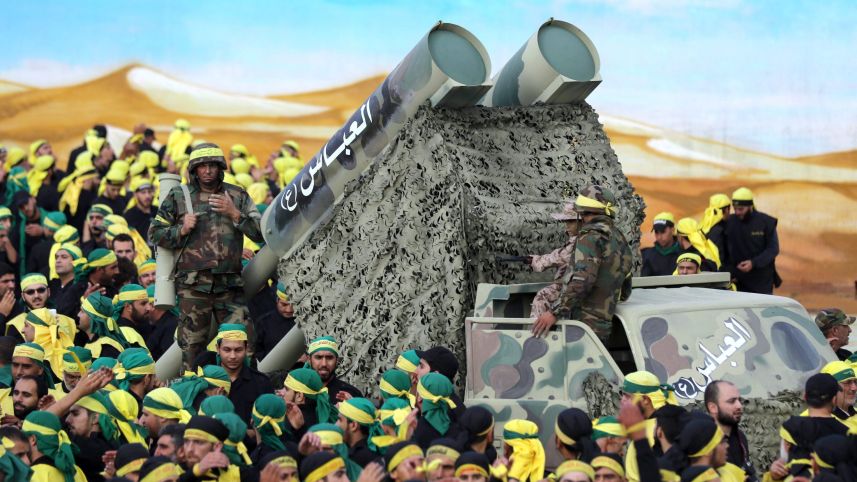Talks about potential threats posed by ammonia are back to top in the Zionist entity. A new report says that such threats are growing more perilous due to advances in Hezbollah munitions.
Israeli daily, Haaretz, warned that an attack on the ship that brings ammonia to the Zionist entity on a monthly basis could kill tens of thousands of people, as a result of a chemical reaction between liquid ammonia and seawater.
Haaretz correspondent Noa Shpigel cited an expert opinion submitted to the Supreme Court by a senior Israeli research chemist, in connection to a legal proceeding between Haifa Chemicals and the city of Haifa concerning the ammonia storage tanks in Haifa Bay.
The opinion, by Prof. Ehud Keinan of the chemistry department at the Technion — Israel Institute of Technology, was submitted a few months ago. The court proceedings were held in camera due to the sensitivity of the issue, according to the report.
A ship brings ammonia to Israel about once a month. It docks at Haifa’s Kishon Port, and it takes most of a day to unload the cargo to the storage facility. The ship carries 16,700 tons of liquid ammonia, 10,000 tons of which are off-loaded in Haifa.
The ammonia on the ship is carried in five storage tanks. According to Keinan, damage to a single tank could cause a disaster whose effects could exceed that of the atom bombs dropped on Hiroshima and Nagasaki in World War II. If all five storage tanks were to be compromised, the resultant deadly cloud of ammonia could cover the Haifa area for at least eight hours: Every person in the danger zone would choke to death within one hour, according to the paper prepared by Keinan.
Haaretz has learned that when the opinion was submitted to the court, a summary of the document was sent to the prime minister and other Israeli officials, in a classified letter.
In a statement, the Prime Minister’s Office confirmed that it had received the letter and forwarded it to the National Security Council, adding that its contents were “discussed with the professionals who deal with ammonia and a response was sent to the letter’s sender and to the mayor of Haifa,” the Israeli daily reported.
It also quoted a person who is involved in the search for an alternative location for the ammonia storage facility said that a proposal to move it to the Eilat-Ashkelon Pipeline Company facility near Ashdod was rejected because of the risks involved in the ammonia delivery ship docking at Ashdod Port, not far from the Gaza Strip.
“They said that the fact that the boat stands there for a full day is very dangerous because Qassam rockets could be fired at it,” said the source, who was speaking on condition of anonymity, adding that during those hours, “it is more dangerous than any storage tank.”
According to a report submitted to the Environmental Protection Ministry in December 2011, of the 120,000 tons of ammonia that are brought to Israel every year, some 80 percent is used in the making of fertilizer — the vast majority of which is exported.
The ministry report notes that the US-owned Haifa Chemicals uses 70 percent of the Zionist entity’s ammonia imports, with Israel Chemicals using the remaining 30 percent.
“The storage tank is a problem, and that’s the only problem anyone has addressed until now, but the real problem is the ship,” said a second anonymous source.
“The state takes the side of Haifa Chemicals,” the source added. “Again and again [Haifa Chemicals] use the same false excuse that Israel needs the ammonia and can’t manage without ammonia. It’s a lie. Ninety-five percent of the ammonia imported to Israel is meant for fertilizer and other products that are sold. It’s purely about business. Nothing will happen to Israel if this business doesn’t exist, other than there will be a plant that won’t run and workers who won’t work. It’s not pleasant when a factory closes, but nothing will happen to Israel’s functioning.”
In fact, said the source, the problem is that Israel’s ammonia consumption, excluding the amounts that are used in making fertilizer for export, is so low that it isn’t profitable to produce. “Until 1983 they made ammonia here. This claim of ‘for the people and the state’ is simply a lie,” said the source.
Meanwhile, the report talked about the growing capabilities of Hezbollah in the recent years. It quoted a senior army officer who recently said that the ability of Hamas and, in particular, Hezbollah, to develop and acquire rockets and highly accurate missiles is “the most significant threat.”
Hezbollah operates a system of rockets and advanced surface-to-surface missiles, and now has 10 times as many rockets as it had on the eve of the Second Lebanon War in 2006.
Hezbollah has about 130,000 rockets of various types: Grad, with a range of up to 40 kilometers; Fajr (75 kilometers), Iranian Zelzal missiles (200 kilometers), Fateh and M-110 (250 kilometers) and the Syrian Scud-D missile (up to 700 kilometers), the report added.
Hezbollah also has diverse launching options: underground launchers, launchers hidden in “nature reserves” and mobile launchers on trucks and commercial vehicles. The Israeli forces estimate that in the next war Hezbollah will be able to fire up to 1,500 rockets a day, compared to about 200 during the 2006 war, according to the Israeli daily.
Source: Haaretz




